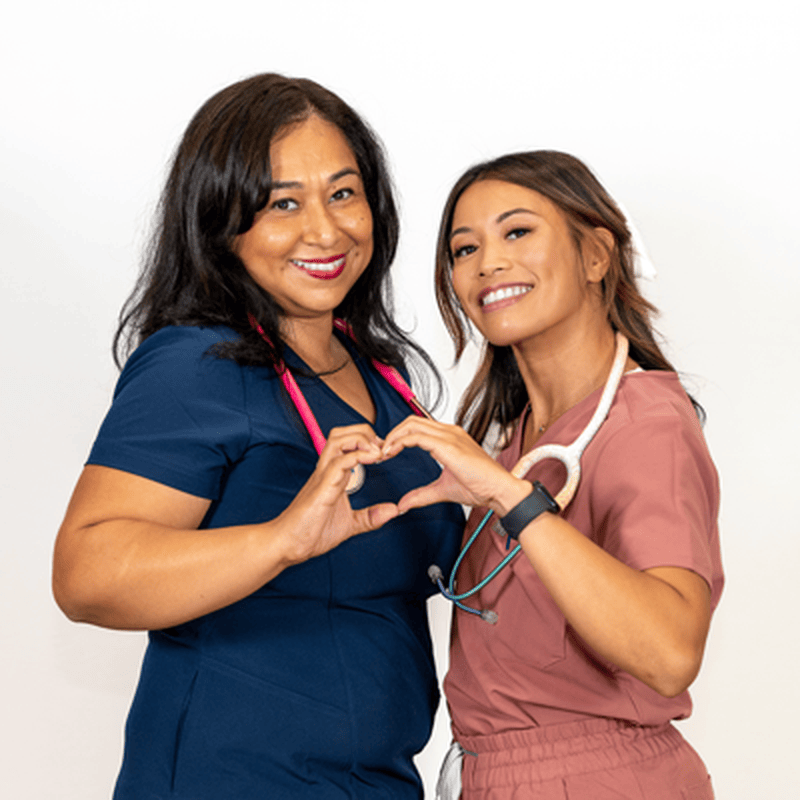Opinion: As a Nurse, I’m TIRED Of The Changing Guidelines

Happy New Year Nurses! I’m really excited about 2022 and all the things we have in store for our nursing and healthcare community. But setting the excitement aside and having a completely transparent moment – I’m not excited about what the new year will bring for us at the bedside considering we’re entering year three of the pandemic. I don’t know about you, but I’m TIRED!
Nurses practicing clinically are feeling burnt out. And who could blame us? We’ve been overworked, understaffed, not appreciated, underpaid, many without adequate PPE or resources, and still expected to be okay showing up to care for sicker patients.
But to add insult to injury while we are busy at the bedside caring for patients, the FDA and CDC are constantly changing recommendations about Emergency Use Authorizations medications, vaccines, and testing, and updating Covid guidelines, and often without the status quo buy-in from the largest segment of the healthcare workforce. So trying to stay current with the latest EUAs and guidelines is like chasing a moving target that seems impossible to hit. So trying to educate our patients about information constantly being updated has left us, the messengers to look like we don’t know what we’re talking about, and as the most trusted profession – that’s frustrating.
This content used under license from "Ask Nurse Alice."
What changed?
When it comes to Covid isolation guidelines, lately there’s been some rumblings in the nursing profession especially from frontline staff nurses about the latest CDC Covid isolation guidelines and newly released 2021 AHA Interim Guidance to Health Care Providers for basic and advanced cardiac life support in adults, children and neonates with suspected or confirmed Covid -19.
The CDC soundbite that’s trending and being shared states that health care professionals can return to work 5 days after testing positive for Covid but that’s not actually the full interpretation of the guidelines set by the CDC. After fully reading the guidelines and benchmarking various versions of guideline implementation of some hospitals, it’s very clear that hospitals across the nation are interpreting and implementing things differently from what the guidelines state.
The latest CDC isolation guidelines for healthcare workers are:
- HCP with mild to moderate illness who are not moderately to severely immunocompromised:
- At least 7 days if a negative antigen or NAAT is obtained within 48 hours prior to returning to work (or 10 days if testing is not performed or if a positive test at day 5-7) have passed since symptoms first appeared, and
- At least 24 hours have passed since the last fever without the use of fever-reducing medications, and
- Symptoms (e.g., cough, shortness of breath) have improved.
- HCP who were asymptomatic throughout their infection and are not moderately to severely immunocompromised:
- At least 7 days if a negative antigen or NAAT is obtained within 48 hours prior to returning to work (or 10 days if testing is not performed or a positive test at day 5-7) have passed since the date of their first positive viral test.
So amid soaring caseloads powered by the omicron variant, the relaxed return-to-work recommendations are seen by officials as a needed step to keep essential public services like police, hospitals, transit systems, and schools functioning. So when the CDC director came under fire, she defended the new recommendations about what workers should do if they do take a rapid test after five days. And while this isn’t the message that hospitals are implementing, she said, “If that test is positive, people (HCPs) should stay home for those extra five days. If that test is negative, people really need to continue to wear their mask for the rest of the ten days.”
But is this the process that hospitals are following???? (hint – for many, maybe most – NO!)
American Heart Association and PPE
And also for consideration is the trending soundbite from the AHA that health care professionals don’t need to worry about wearing PPE when responding to basic or advanced life support situations. I admit I was outraged when I first heard that because it instantly sounded like a complete disregard for the health and safety of nurses especially at a time when the Omicron variant cases are spiking. BUT after reading the full document, I believe
- These recommendations were released prematurely without a full appreciation for the health and safety of HCPs.
- In the weeds of the article still do encourage PPE use but did a poor job at communicating how they stratified risk for responding to situations with or without it.
- Collectively presented the information in a way that in the court of public opinion leans more so on the interest of the public and staffing, and not the first responders – most who are nurses.
Nurses, Speak Up
And while nurses are indeed concerned and do care for the health and safety of the patients we serve, at no time should anyone expect nurses to risk their own health safety to care for someone else. That isn’t selfish. This isn’t the military, and we didn’t sign up to sacrifice our lives in a war. So don’t feel bad about wanting to protect yourself and your safety. Speak up and speak loudly.
We were already experiencing a nursing shortage before the pandemic, and it’s only worsened since then. It’s time nurses unify and voice our concerns about guidelines and recommendations from health agencies that don’t serve us well and jeopardize our safety and well-being. Its practices like these fuel the real nursing shortage. And with nurse health and safety at risk, we won’t only be leaving because we’re frustrated but also leaving because we’re put in high-risk exposure situations, get sick, and become patients which will only increase the demand for nurses.





